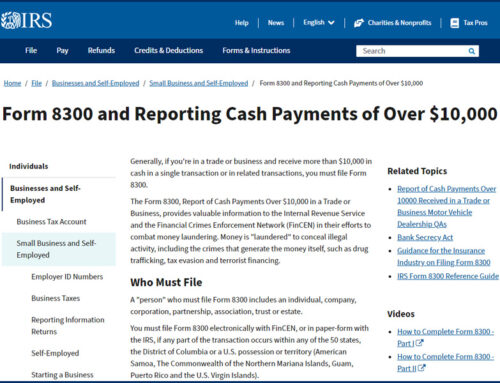Introduction
Liquidity ratios are fundamental financial metrics that provide insight into a company’s ability to meet its short-term obligations. These ratios are particularly important in sectors with volatile cash flows and regulatory complexities, such as the cannabis industry.
Given the unique challenges faced by cannabis businesses — including restricted access to banking, stringent regulatory oversight, and unpredictable revenue streams — maintaining healthy liquidity is often a top priority for management teams and investors alike.
This report explores the three primary liquidity ratios — the current ratio, the quick ratio, and the cash ratio — as they relate to the cannabis industry. It also examines industry trends, the impact of regulatory and market factors, and best practices for cannabis companies seeking to optimize their liquidity.
The Current Ratio
Definition and Formula
The current ratio is calculated as follows:
Current Ratio = Current Assets/Current Liabilities
This ratio measures a company’s ability to pay off its short-term liabilities with its short-term assets. A current ratio greater than 1 indicates that a company has more current assets than current liabilities, suggesting it can cover its obligations in the short term.
Application in the Cannabis Industry
For cannabis companies, the current ratio is a critical indicator of financial health. However, the industry faces several unique challenges:
-
Inventory Challenges: Cannabis businesses often hold significant amounts of inventory due to regulatory requirements and the perishable nature of their products. This inventory can be difficult to convert into cash quickly, especially if sales are slow or if there are restrictions on distribution channels.
-
Regulatory Constraints: The legal cannabis market is subject to strict regulations that can delay payments, restrict sales, and increase compliance costs. These factors can strain liquidity and make it harder for companies to maintain a healthy current ratio.
-
Market Volatility: The cannabis industry is highly competitive and subject to rapid changes in consumer demand, pricing, and regulatory environments. This volatility can lead to fluctuations in revenue and cash flow, further impacting liquidity.
Industry Benchmarks
Recent data from Q1 2025 shows that the average current ratio for the legal cannabis industry is approximately 1.89, with a high of 5.16 and a low of 0.08. However, the median value for plant-touching subsectors (such as cultivation and retail) is often below 1, indicating that many companies in these areas are experiencing liquidity stress.
The Quick Ratio
Definition and Formula
The quick ratio (also known as the acid test ratio) is calculated as:
Quick Ratio = (Cash + Marketable Securities + Accounts Receivable)/Current Liabilities
This ratio provides a more stringent assessment of liquidity by excluding inventory from current assets. It measures a company’s ability to meet its short-term obligations without relying on the sale of inventory.
Application in the Cannabis Industry
The quick ratio is especially relevant for cannabis companies because:
-
Inventory Liquidity Issues: As mentioned earlier, cannabis inventory can be difficult to liquidate quickly due to regulatory and market constraints. By excluding inventory, the quick ratio offers a clearer picture of a company’s immediate liquidity.
-
Receivables Challenges: Many cannabis companies extend credit to distributors or retailers, but collecting receivables can be slow due to regulatory delays or financial instability among buyers.
-
Cash Flow Volatility: The quick ratio highlights the importance of maintaining sufficient cash and liquid assets to cover short-term liabilities, which is crucial in an industry with unpredictable cash flows.
Industry Benchmarks
In Q1/’25, the average quick ratio for the legal cannabis industry was 1.37, with a high of 4.21 and a low of 0.03. Notably, the most recent quarter saw a quick ratio of 0.92, which is below the industry average and underscores the ongoing liquidity challenges faced by many cannabis businesses.
The Cash Ratio
Definition and Formula
The cash ratio is the most conservative liquidity metric and is calculated as:
Cash Ratio = (Cash + Cash Equivalents) / Current Liabilities
This ratio measures a company’s ability to pay off its current liabilities using only cash and cash equivalents, excluding receivables and inventory.
Application in the Cannabis Industry
The cash ratio is particularly important for cannabis companies because:
-
Banking Restrictions: Many cannabis businesses have limited access to traditional banking services due to federal regulations in the United States. This forces them to operate largely in cash, making the cash ratio a key indicator of financial stability.
-
Credit Constraints: Without access to conventional credit facilities, cannabis companies must rely on their own cash reserves to manage short-term obligations.
-
Regulatory Compliance Costs: High compliance costs can drain cash reserves, making it essential for companies to maintain a healthy cash ratio to avoid insolvency.
Industry Benchmarks
While specific industry-wide averages for the cash ratio are less commonly reported, anecdotal evidence and financial reports suggest that many cannabis companies struggle to maintain a cash ratio above 0.5. This reflects the industry’s reliance on cash and the challenges of building sufficient reserves.
Industry Trends and Challenges
Liquidity Challenges
The cannabis industry faces several unique liquidity challenges:
-
Limited Access to Banking: Due to federal restrictions, many cannabis businesses in the U.S. cannot access traditional banking services, forcing them to operate in cash and complicating cash management.
-
High Regulatory Costs: Compliance with state and local regulations is costly and time-consuming, diverting resources away from operations and growth.
-
Slow Inventory Turnover: Regulatory restrictions and market saturation can lead to slow inventory turnover, tying up capital in unsold product.
-
Unpredictable Revenue Streams: The cannabis market is subject to rapid changes in consumer demand, pricing, and regulatory environments, leading to volatile revenue and cash flow.
Leverage vs. Liquidity
Despite these challenges, the cannabis industry generally maintains relatively low leverage. For example, the liabilities-to-equity ratio for the industry was 0.35 in Q1 2025. However, low leverage does not always translate to strong liquidity, as cash flow and access to credit remain constrained.
Best Practices for Managing Liquidity in the Cannabis Industry
To navigate these challenges, cannabis companies should consider the following best practices:
-
Maintain Cash Reserves: Given the industry’s reliance on cash and limited access to credit, building and maintaining robust cash reserves is essential.
-
Negotiate Favorable Payment Terms: Companies should work with suppliers to negotiate extended payment terms and with customers to encourage prompt payments.
-
Monitor Financial Performance: Regular review of financial statements and liquidity ratios can help identify potential liquidity issues before they become critical.
-
Diversify Revenue Streams: Expanding into ancillary services or new product lines can help stabilize revenue and reduce reliance on a single source of income.
-
Implement Strong Cash Management Practices: Effective cash management, including careful budgeting and forecasting, is crucial for maintaining liquidity in a volatile industry.
Summary Table
| Ratio | Formula | Industry Average (Q1 2025) | Notes |
|---|---|---|---|
| Current Ratio | Current Assets / Current Liabilities | 1.89 | Median can be <1 for plant-touching subsectors |
| Quick Ratio | (Cash + Marketable Securities + Receivables) / CL | 1.37 | Recent value: 0.92 (below average) |
| Cash Ratio | (Cash + Cash Equivalents) / Current Liabilities | N/A | Highly relevant due to banking restrictions |
Conclusion
Liquidity ratios are indispensable tools for assessing the short-term financial health of cannabis companies. While the industry’s average liquidity ratios may appear healthy on paper, median values for many subsectors — especially those involved in cultivation and retail — are often below 1, indicating that a significant number of cannabis businesses face ongoing liquidity challenges.
The unique regulatory and market environment of the cannabis industry underscores the importance of proactive liquidity management. By maintaining strong cash reserves, negotiating favorable payment terms, and regularly monitoring financial performance, cannabis companies can better navigate the challenges of operating in this dynamic and highly regulated sector.



